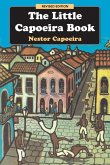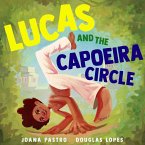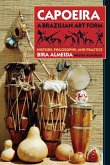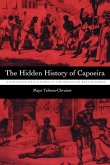Ballet, acrobatics, music, and cultural expression come together in the distinctive Brazilian martial art known as capoeira. Its roots are in the 16th-century Brazil of enslaved Africans and has developed into a sophisticated art form. Some essential elements of capoeira are as follows: History: - Origins: Capoeira developed as a means of self-defense for enslaved people who were not allowed to practice martial arts openly. They disguised their training as dance to avoid detection. - Cultural Significance: It reflects African heritage and incorporates various cultural elements, including music, song, and folklore. Characteristics: - Movement: Capoeira is known for its fluid, dynamic movements, including kicks, spins, and acrobatics, often performed in a circular formation known as a "roda" (circle). - Music: Traditional instruments such as the berimbau (a single-string percussion instrument) set the rhythm for the movements, accompanied by singing and clapping. - Game: The practice is often described as a "game" rather than a fight. Participants engage in a playful exchange of movements, demonstrating skill, strategy, and creativity. Training: - Classes: Capoeira training typically includes physical conditioning, learning specific movements (known as "ginga"), and practicing music and singing. - Community: It fosters a strong sense of community, with practitioners often referred to as "capoeiristas," who support each other in learning and growing within the art. Styles: - Regional: Originating from the state of Bahia, it is characterized by a focus on speed and acrobatics. - Angola: A slower, more traditional style that emphasizes strategy, deception, and subtlety. Benefits: - Physical Fitness: Capoeira enhances flexibility, strength, endurance, and coordination. - Mental Well-being: It promotes discipline, focus, and confidence, along with providing a sense of belonging within a community. Capoeira has gained international recognition and is practiced worldwide, celebrated for its artistic expression and the cultural values it embodies. It was recognized by UNESCO as an Intangible Cultural Heritage of Humanity in 2014, highlighting its significance as a cultural practice. Whether for self-defense, fitness, or cultural connection, Capoeira offers a unique blend of movement, music, and community that appeals to many.
Bitte wählen Sie Ihr Anliegen aus.
Rechnungen
Retourenschein anfordern
Bestellstatus
Storno







